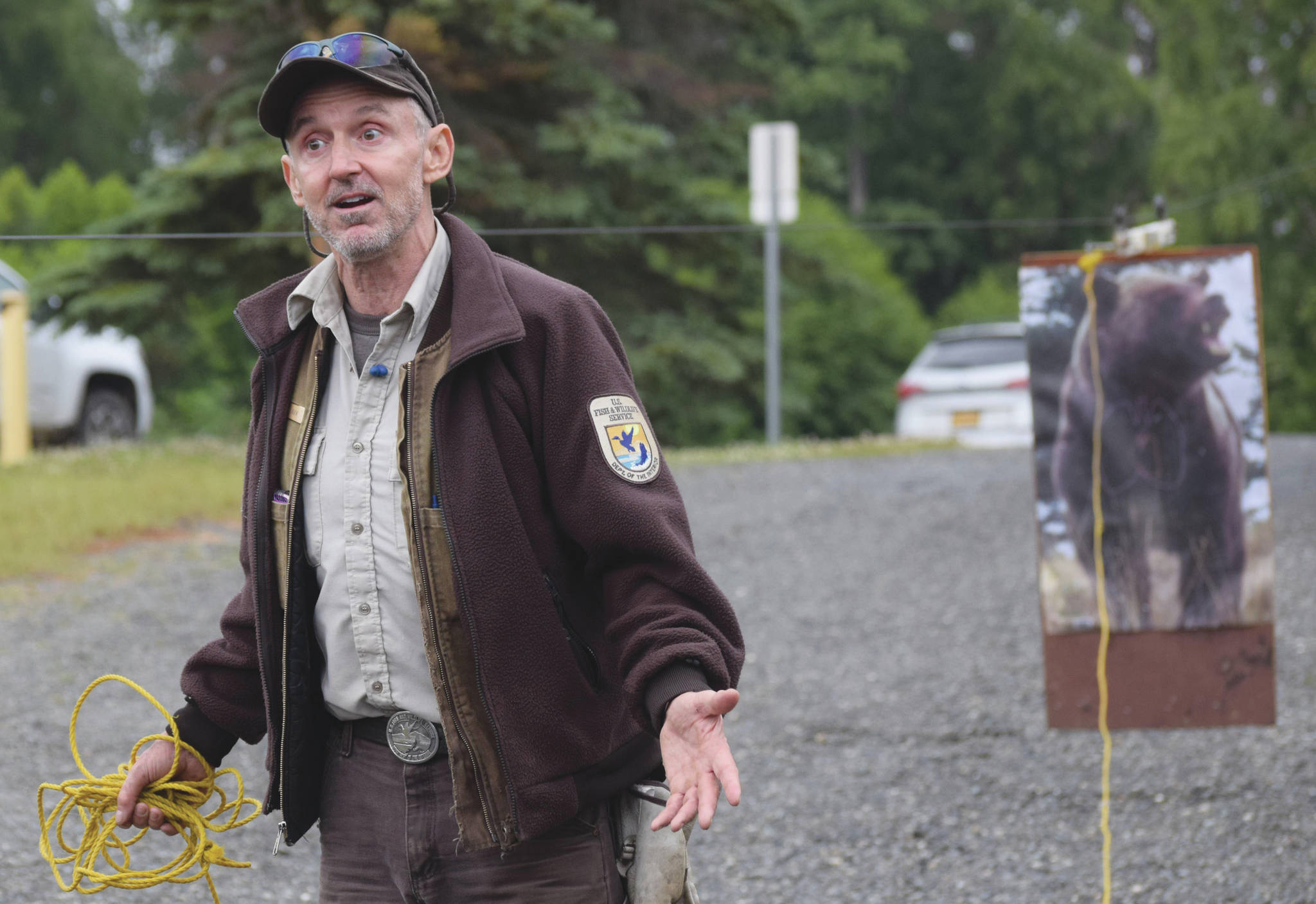The three pillars of safety in bear country are awareness, respect and knowledge, according to an official at the Kenai National Wildlife Refuge.
Ranger Jason Oles, who has had bear encounters and experiences both in Alaska and in the Lower 48, as well as Ranger Scott Slavik, led a seminar at the refuge Tuesday for around 30 community members, outlining best practices for living, hiking and camping in bear territory.
Slavik said he doesn’t know if this summer season has seen an unusually high number of human-bear encounters or if people are simply talking about them more, but eventually the refuge decided to host a seminar because of the flow of calls from concerned community members.
Oles started with the three pillars, which he said can make all the difference.
“If you’re in a surprise encounter, you probably missed something with your awareness level,” Oles said.
He delved into the different bear species, and how they’re different from each other.
Black bears, Oles said, evolved to flee from danger. Brown bears are generally a little more defensive, both of their young and food sources.
Knowing the differences between a defensive and nondefensive encounter with bears, Oles said, can help people react during those encounters.
In a nondefensive encounter, when a bear is taking in the scent of the area and maybe on its hind legs in a curious manner, the general advice is to make some organic noise and slowly shuffle backward away from the animal.
In a defensive encounter or when a bear is testing dominance, however, sometimes using a deep and sturdy register in the voice and taking one confident step toward the animal can cause it to retreat. Defensive bears will sometimes take a step toward a person aggressively, make noise, pin their ears or swat at the ground with their paws.
Oles said most bears’ social hierarchy is based on the art of bluffing.
Ranger Scott Slavik, who also presented on Tuesday night, spoke about the importance of planning a camping trip in bear territory.
Going in larger groups, separating cooking, sleeping and latrine areas, and spacing out tents to provide potential exit paths are just some of the simple ways people can minimize risk of a bear encounter while camping. Those, and perhaps not always choosing the most scenic site by a salmon stream, where bears are sure to feast.
“That camp organization is a big thing as well,” Slavik said.
In more dire run-in situations, Oles said using bear deterrent spray effectively will most likely keep a person out of harm’s way.
Slavik said statistics show that bear spray yields better results than even firearms. A few participants in the seminar said firearms, and other deterrents like flares, were their protective measures of choice.
Actually being able to deploy the spray in a stressful situation, Slavik said, is crucial.
“It’s a really great thing to become familiar with,” he said.
Oles said as much as it is helpful to learn about bears’ stress responses, people recreating in bear territory should know about their own as well.
“It’s an equal part of the equation,” he said.
Human stress responses include temporary auditory loss, tunnel vision and the loss of fine motor skills, which can hinder a person’s ability to remove the safety from bear spray and deploy it.
“With that response it becomes super important to practice with your bear spray,” Oles said, while also noting that the spray becomes an attractant after it’s used.
The rangers led a spray exercise, in which participants had to quickly unholster and deploy an inert deterrent at a mobile bear target.
For more information on bear-aware safety, the Kenai National Wildlife Refuge can be reached at 907-260-2820.
Reach reporter Camille Botello at camille.botello@peninsulaclarion.com.

